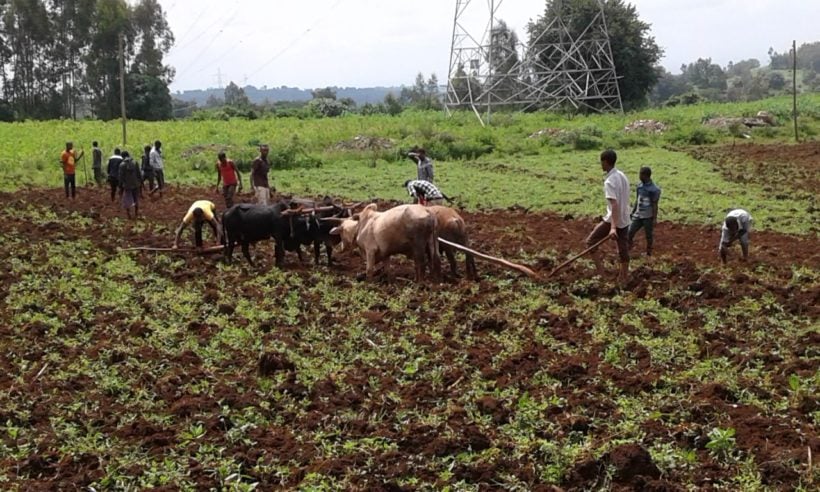
In 2021, global hunger surpassed all previous records, with close to 193 million people acutely food insecure. This crisis is worsening, and African countries are at its epicenter. Eight of 12 countries forecast to have more than 3 million people in food crisis in 2022 are in Africa.
While immediate aid is needed, the long-term solution in Africa is to boost domestic production. Indeed, the continent could be food sufficient through times of war and peace, boom and bust but today its huge agricultural potential is being overlooked. This is not for lack of urgency but for lack of patience – patience on the part of investors who may still shy from making long-term investments in African agriculture.
Let’s take mechanization as an example: African farming today remains the least mechanized in the world. Globally there are roughly 200 tractors per 100 square kilometers of agriculture lands, but in sub-Saharan Africa, there are only about 27. Changing that would go a long way in closing the deep productivity gap between African farms and farms in rich countries. Closing that gap could increase the global supply of cereals, grains, and vegetable crops by a stunning 20 percent.
But doing so is a multi-billion-dollar quest that cannot be solved with Silicon-valley type infusions of fast cash at high costs. A new tractor can cost anywhere from US$10,000 to $200,000—an unheard of amount of money for most farmers in Africa. What is needed is patient capital—invested for the long-term with low interest rates, using innovative new financial models.
Patient capital could fund the mechanization of African agriculture, just as it is already transforming other sectors. For example, it’s already infusing clean energy enterprises through green bonds, with Kenya, Nigeria and South Africa taking the lead. The $2 billion Breakthrough Energy Ventures fund, launched by a coalition of investors led by Bill Gates, invests in 20-year cycles. The Engine incubates “tough tech” to solve global problems—without eyeing a return on investment for at least 12 years.
Patient capital will also transform health in Africa, not least through building its vaccine and medicines manufacturing capacity—a mission supported by the African Development Bank with a US$3 billion investment over 10 years.
Why isn’t this happening for agriculture? Although agriculture contributes 40% of GDP and accounts for 60% of the continent’s labor force, it receives on average 4% of long-term financial investments. That should be 40-50%.
There are signs of change. Hello Tractor, recently benefited from a round of patient capital—in the form of long-term, zero-interest loans—provided by Heifer International. Hello Tractor connects tractor owners to smallholder farmers using a smart app and booking agents with strong farmer networks. The US$1 million capital enabled Hello Tractor to finance the purchase of 17 tractors in Nigeria, Kenya and Uganda.
Building on the success of its partnership with Hello Tractor, Heifer International has now committed an additional US$3.5 million in tractor financing for Africa under its Tractors 4 Africa project. Heifer International’s total investment of US$4.5 million is set to provide affordable access to tractor services to 872,250 smallholder farmers at an affordable rate, boosting farm productivity, employment, food security and farmer livelihoods over the next ten years.
This funding will be catalytic.
So far, Hello Tractor has facilitated tractor services for more than 500,000 farmers in 17 countries. We are now growing our capital base to finance more tractors. Patient capital for African agriculture cannot only be the purview of philanthropists. We need to excite capital markets, showing investors that they will get back their principal plus interest, albeit with a longer time horizon.
There are other positive developments for mechanization and long-term financing. In some districts of Ghana up to 80 percent of farmers use machinery. These pockets of mechanization owe a lot to support of the government, which has imported and distributed tractors at subsidized rates to farmers and private entrepreneurs, who operate nearly 90 Agricultural Mechanization Service Centers.
Finally, there’s another less obvious benefit to patient capital. A recent study in Kenya shows that it can grow jobs, and jobs that are high quality. This is in part because firms that benefit from patient capital can pursue longer-term growth strategies, which include hiring more workers and investing in skills that generate profits over the longer term. In addition, investors tend to care more about a firm’s social performance as they look beyond short-term profitability. They care more.
Africa needs this. Every year, 10-12 million new workers enter African labor markets, while only three million jobs are created. Economic growth and social stability in Africa demand the creation of millions of high-quality jobs, especially in food systems that provide a bedrock of African economies. Heifer International’s investment alone will create nearly 7,000 new jobs as booking agents, tractor operators, technicians and tractor owners over the 10 years.
Because patient capital demands a return on investment, it demands accountability and rigor. So does agriculture, and so does a tractor. When investors bet on patient capital, they are looking for a return that’s reasonable and meaningful—for the investor, the company, and ultimately the people who are employed and who benefit from new products and services. The mechanization of African agriculture may not be the goose that lays the golden egg, but with patience, it will give back far more than it receives.
Adesuwa Ifedi is Africa Senior Vice President for Heifer International. Jehiel Oliver is Chief Executive Officer for Hello Tractor

